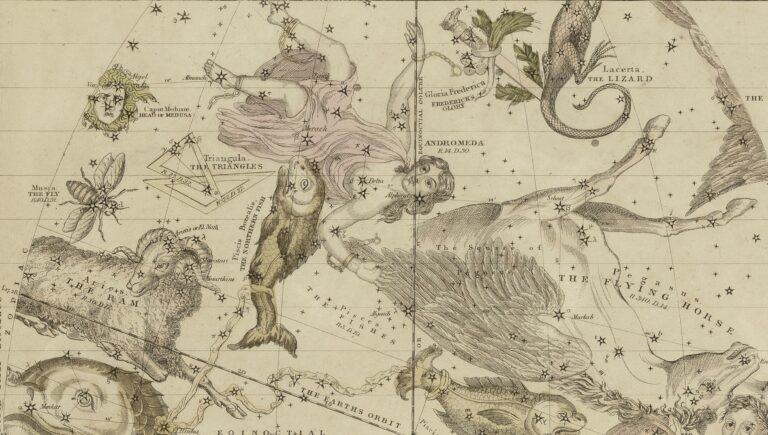Key Takeaways:
Our closest planetary neighbor shares a surprising feature with Earth: volcanoes. A new study, published February 1st in the journal Science Advances, revealed interesting new details about the volcanic history of Mars. Thomas Lapen, first author of the paper and Professor of Geology at the University of Houston, told Astronomy that their analysis of Martian meteorites showed that volcanic activity on Mars has been ongoing since at least 2.4 to 0.15 billion years ago—and likely continues today.
Given that the meteorites Lapen and his group studied came from a single ejection site on Mars, they reveal over 2 billion years of stacked lava flows, Lapen said. The discovery could help scientists decipher more about how often volcanoes erupted on Mars, as well as time periods when they were most active.
Lapen explained that the type of volcanic activity that occurs on Mars is called basaltic volcanism, which is similar to the type of volcanism seen, for example, in volcanoes in Hawaii. These types of volcanoes produce fluid lava and are rarely explosive.
But Mars isn’t the only extraterrestrial body with volcanoes. Volcanoes—in various forms—are also found on other planets, moons, and even asteroids. Take, for instance, Jupiter’s moon Io, which has active volcanoes that spew gas and melted rock, or Venus, which is covered with over 1,000 volcanoes, according to NASA. It’s not yet determined whether these venusian volcanoes are active or not.
Cold as ice
Then there’s a whole other type of volcanism, called cryovolcanism. As NASA explains in this interactive graphic, cryovolcanoes erupt water and gases rather than melted rocks. They dot a number of different bodies in our solar system, include Neptune’s moon Triton and Saturn’s moon Enceladus.
“It’s a form of volcanism because volcanism is a process that brings material from the interior to the surface, but it is not molten rock,” Dr. Rosaly Lopes, Senior Research Scientist at NASA’s Jet Propulsion Laboratory, told Astronomy. Instead, cryovolcanoes occur on bodies with an ocean situated beneath an icy crust. When pressure builds up, it is released in the form of geysers of water mixed with ammonia or methane.
Generally, cryovolcanoes are found on bodies in the outer solar system, Lopes said, though scientists also believe that cryovolcanism may even have happened on the asteroid / dwarf planet Ceres. According to recent studies from the Max Plancke Center for Solar System Research, several structures in Occator Crater suggest recent geologic activity consistent with cryovolcanic activity, though to date only one “mountain” has been found on the world.
Information about these volcanoes provides scientists with clues about important geological processes. “Volcanism is one of the major, really fundamental processes that shapes the surface of a planet or moon,” Lopes said. That shape, she explained, comes from the interplay of four major processes — volcanism, tectonism, erosion, and impact cratering. Understanding volcanism’s role in shaping a body’s surface provides a crucial clue in understanding more about the geological processes of that planet.
“For example,” Lopes told Astronomy, “if Earth was the only place we had seen volcanism, we might think that volcanism really depends on plate tectonics…But when we look at the other planets, we see that they have or have had volcanism in the past, and there is no plate tectonics.”
She cited Io as one instance of this: when scientists saw the incredibly active volcanism occurring there, they realized that it was tidal heating that caused this volcanism. It works like this: Io and other Galilean satellites (such as Europa and Ganymede) are in synchronous rotation around Jupiter. Io then becomes caught up in a tug of war between Jupiter’s gravity and the gravity of these other satellites, Lopes explained. This in turn leads to the bulging of Io’s crust up and down, and the resulting friction produces a large amount of heat and a molten interior. When the pressure builds, it occasionally erupts melted rock and plumes of gas.
Recent evidence even suggests that they may appear on comets. Comet 29P/Schwassmann-Wachmann displays outbursts on carbon monoxide consistent with other forms of cryovolcanism around the solar system. The outbursts seem to happen from one spot on the comet — making it one of the smallest bodies believed to have signs of volcanism.
While volcanoes can shed light on certain geological processes, there’s another, even more intriguing reason to search for them: they may be indicators of climates suitable for life. Volcanism provides heat and energy, which is essential for life, Lopes said. And cryovolcanism has not only heat, but water—two of the essential ingredients of life. That doesn’t mean that every body with cryovolcanism has the necessary conditions to support life, of course. But those planets may not be a bad place to start.











